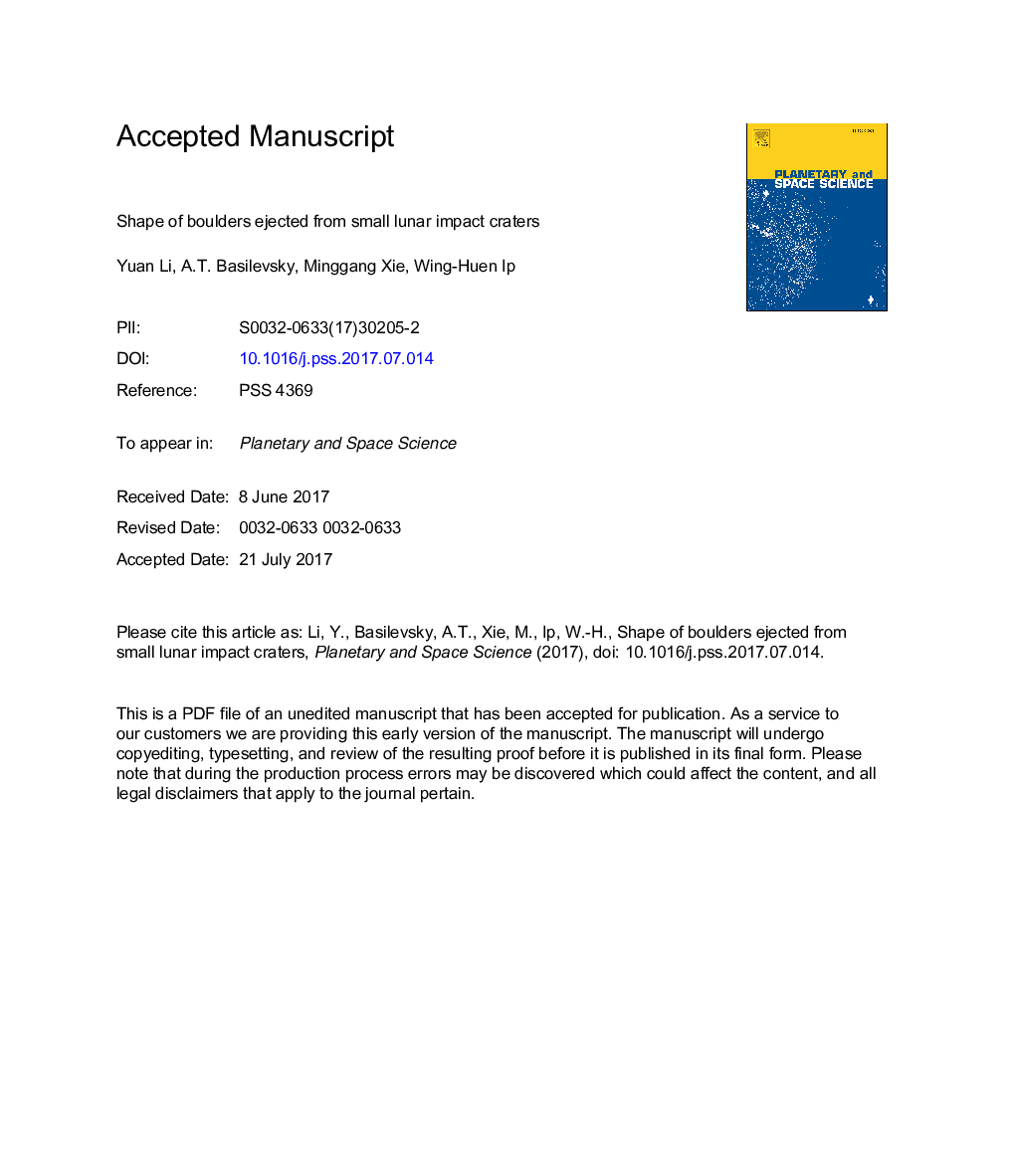| Article ID | Journal | Published Year | Pages | File Type |
|---|---|---|---|---|
| 5487936 | Planetary and Space Science | 2017 | 16 Pages |
Abstract
The shape of ejecta boulders from 7 lunar impact craters <1Â km in diameter of known absolute age was measured to explore whether it correlates with the crater age and the boulder size. The boulders were mapped and then measured by rectangular fitting and the shape was represented by the axial ratio or aspect ratio (A) of the rectangle. The main conclusions from the analysis of our measurement results are: 1) the percentages of the number of boulders of studied craters decrease with the increase of the axial ratio. Most (â¼90%) of the boulders have the axial ratio in the range of 1-2; no boulder with axial ratio larger than 4 was found. 2) the axial ratios of mare ejecta boulders decrease with their exposure time, whereas that for highland ones show unchanged trend. This difference may be probably due to target properties. 3) The shape of ejecta boulders are influenced by mechanical strength of bedrocks and space erosion. 4) surface peak stresses caused by thermal fatigue maybe play a significant erosion role in the shape of boulders of various diameter.
Keywords
Related Topics
Physical Sciences and Engineering
Earth and Planetary Sciences
Geophysics
Authors
Yuan Li, A.T. Basilevsky, Minggang Xie, Wing-Huen Ip,
